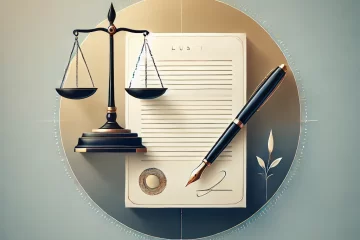![]()
Introduction
The domain of ‘research’, enhancing the clarity as regards any topic, has been left untouched by the students of any discipline since a long time.
Although the higher education, specifically those pertaining to the Masters/Doctorate demands for an excellence in research skills, but such skills being avoided since the initial days of academic career; even the students getting themselves enrolled in the higher education find it difficult to do so.
The research, hence acts, either as a lubricant (for those who know how to do this) or as an entity, providing friction (to those who don’t know how to do this).
With a crave for a systematic order among the citizens of every country in this 21st century, there is also a larger demand for systematisation of every task undertaken by the humans.
It is in this regard; the realm of research gets extended.
For the purpose of researching any object, so many approaches are available.
We can avail the approach of ‘black-letter law’, primarily focussing on the research based upon the assessment of the Statutes, Court Judgements, Legal Doctrines, Case Laws and vice versa, or we can make use of the ‘law in context’, by which we can understand law from a socio-legal point of view.
So, we can see that as far as the approaches pertaining to the legal research are concerned; we have so many.
But in this article, our primary focus will be upon the relevant tools used by the legal students, scholars and academicians for the purpose of researching and its impact upon the counsel/lawyer-client relationship.
Any research begins with the proper and systematic collection of data. This is the phase when we will require various tools for the successful accomplishment of the given task.
For the purpose of conducting legal research, the basic tools mainly sought by the fellow researchers are Interviews, Surveys and Questionnaires, and other Observational methods.
Basic Tools in Legal Research
- Interview: Basically, interviewing as a researcher would mean asking questions to the persons. The questions would be such which would add some content to the research and such questions should be sought from the persons, worthy of the undertaken research.
- Survey & Questionnaire: If the target of our research comprises a portion which is countable, then interviewing them individually will be fruitful, but if the number increases to a limit for e.g., consider researching the desirability of any enacted law by the population of any state/region, then interviewing every man and woman of such region/state will be a very difficult task. It is here, when the surveys and questionnaires bloom. The purpose of such tools is to have a generalised idea of the perceptions of the people regarding various issues.
- Observational Methods: With the expanding dimensions of the legal research, the study of the actions, attitudes & behaviours of the people becomes important. To examine such traits and then briefly describing, analysing and interpreting them helps a researcher to assess the minds and perceptions of the people.
It must be noted here, that there exists a further classification of the above-mentioned tools, but for the purpose of this article, we will primarily focus upon the general conceptions of the legal research tools.
Now we will highlight upon the impact of the research tools upon the counsel/lawyer-client duo.
Impact of Research Tools upon Counsel-Client Duo
- The research tools help in the determination of the objectives of the lawyers and their clients. Such tools enable the intersection of the objectives in a single point. Usually, in any case the client has some objectives which he/she intends to achieve. And for that purpose, it’s necessary that the objective of the client should coincide with the objective of the counsel/lawyer. The Parallel running of these two objectives will be sufficient to make the case fragile.
- The tools also help in the identification and analysis of the facts and other relevant materials. Whenever a case is sought to a counsel/lawyer, the counsel/lawyer should make a better use of the research tools in the identification of the major heads and the subsequent analysis of such heads for the purpose of making the case strong. The counsel/lawyer should, after the systematic collection of facts, distinguish among the facts the points of relevance and the points of irrelevance. This will enable the counsel/lawyer to understand the case.
- It’s also important for the lawyers to remember that after the collection and subsequent distinction of the factual materials, the counsel/lawyer should try to put the relevant facts within a boundary prescribed by the law. In simple terms, the facts should conform to the principles and directions of law. It is in this conformity of the facts with the law, which will form the basic framework of the given case. It should always be remembered that if the facts supersede or comes out of the legal perimeters, then it’ll be difficult to ascertain the validity of such facts before law. A client’s case should be viewed as per the facts and the endorsement and validation of such facts by the law.
- Now, while investigating the relevant facts, the emphasis should also be given to its sources enabling such investigation. A mere examination of the facts is not enough, the counsel/lawyer in any case should also select the sources properly. The primary reason behind such a caution is that, if the relevant facts are basing upon the sources which will not be considered legit or valid by the law, then the entire process of research will harvest a nought. Hence, it is always prescribed to the counsel/lawyers to properly select the research tools from the very initial stage of the case after being brought by the client.
- Sometimes, a situation arises in the midst of the court proceedings when the situation demands some facts which were earlier considered irrelevant by the counsel/lawyer, but under the new circumstances becomes important. Hence, a complete knowledge as to both the relevant and irrelevant facts must be acquired by the counsel/lawyer. It will also help the counsel/lawyer in guiding the court to walk in a particular direction and simultaneously distort the move of the opponent counsel/lawyer to dodge and mislead the court by presenting the irrelevant facts. Hence, an advocate should be accustomed with all the relevant and irrelevant facts of the case.
- Now, there are instances when the counsel/lawyers get confused between the ‘fact in question’ and the ‘legal issue in question’. Mixing both of these legal terminologies will defeat the case. While conducting the research, the researcher must be very cautious of distinguishing them both. Any case, when presented by the client to the counsel/lawyer consists of these two questions. And it is here where the researcher should be very sensitive because the objective of the client and the legal issue as well as the fact in question has to be kept under a uniform umbrella. It hence, amounts to the most difficult part in the research of any case where the counsel/lawyer should pay his maximum attention.
- Now, here comes the last part of the legal research where all the facts have to be tested by applying the various legislations, directions & advisories of the governments, and principles of law. If the legal issues as well as the facts in question are well suited for the applicability of the legal provisions then the client’s case will become stronger. For this purpose, the Counsel/lawyer should use the Doctrinal Approach. It is by the final use of this doctrinal approach that the case takes its final shape. This can be done by using the library. From the Law Journals to Case Laws to the Commentaries to the Manuals, everything should be considered while considering the case. Although in this modern world, after the introduction of the e-libraries, the legal research has become more efficient and smoother. And it has also enabled the research to be less time consuming.
Conclusion
So, from the above discussion, one may be able to comprehend the role of the research tools in the legal research and its significance upon the counsel-client relationship.
Earlier, the arena of the legal research was very limited and its methods were also very traditional, but with the emergence of new complex legal issues, the importance of the legal research became imminent. The legal scholars and other academicians propounded that in order to ensure good research, there should exist a proper methodology for the purpose of guiding those who want to gather the knowledge of law. The research nowadays, is not just limited to mere collection of data, rather it implies a systematic and scientific approach which starts from the collection of the required data to its proper assessment. In today’s fast-growing economies, the dimensions of legal research are expanding and so expanding is the enlightenment of the general masses regarding the diverse conceptions of law.
With the digitisation of the world, the materials can be gathered in just one click over the mouse. But even if the resources are readily available to the seekers, the seekers should never avoid the prescribed methodology for conducting the research.



0 Comments